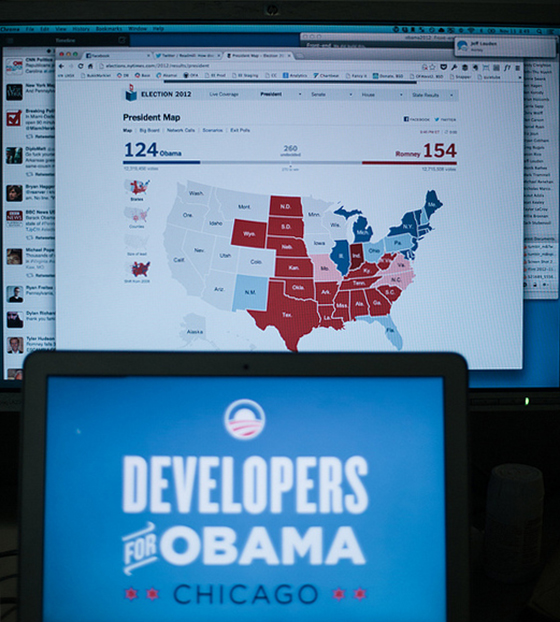From the very first scene I knew I was going to enjoy this. I think you will too.
http://www.youtube.com/watch?v=aTLySbGoMX0#!
I had another dream, I had another life
From the very first scene I knew I was going to enjoy this. I think you will too.
http://www.youtube.com/watch?v=aTLySbGoMX0#!
Photograph Brian Steel was born with fiber-type disproportion (a form of muscular dystrophy). The condition leaves him extremely weak, unable to lift or carry objects weighing more than 5 pounds, and with breathing difficulties. Despite this, Brian lives an independent life, and he grew tired of how others would judge him without getting to know what he wasn’t–and was–capable of doing for himself.
In a CNN article that has 8 images and an interview, Brian explained his motivation to photograph himself and others with disabilities:
Some of the people I photographed and interviewed for this project appeared to be perfectly able-bodied but actually have impairments that limited them physically. They are misperceived in a manner that is almost opposite to my experience. They talked about how judged they often felt because people could not understand why they weren’t doing certain things that required more physical effort.
On the other hand, I met people who had experiences where people felt compelled to help them because they were in a wheelchair, but those individuals are fully capable and have accomplished more than a lot of their able-bodied peers.
My point is not to say that one group is better than the other but rather that you simply can’t know what someone is capable of without getting to know them.
I think this is a good message, but whenever I read articles like this I think of another one. At a time when 90% or more of unborn human beings with a diagnosis f Down syndrome are aborted, I’m afraid our society is in denial of the fact that we, individually and as communities, need these people in our lives. While some with disabilities may depend on us for physical and medical support, we rely on them to remind us of what it means to be human. It’s not about what we have–whether it’s health, comfort, friends or family–but it’s about out struggle to attain those things for ourselves and others.
At first I only found references to this story from right-wing sites like InfoWars and The Blaze, then I found the Daily Kos reporting basically the same story, so I guess it’s true. (Besides, there are pics. And therefore, by Internet Law, it must have happened.)
 So the cops in Seatle decided to do a gun buy-back this past Saturday (Jan 26). They were offering $100 for shotguns, rifles and handguns and $200 for “assault rifles”. What with gun prices being what they are and a lot of folks deciding to stock up out of fear of impending gun-control regs, a bunch of enterprising gun collectors showed up with homemade signs offering to outbid the cops if they liked your gun. What’s more, the cops were handing out Best Buy gift cards, and the gun collectors were paying in cold, hard cash.
So the cops in Seatle decided to do a gun buy-back this past Saturday (Jan 26). They were offering $100 for shotguns, rifles and handguns and $200 for “assault rifles”. What with gun prices being what they are and a lot of folks deciding to stock up out of fear of impending gun-control regs, a bunch of enterprising gun collectors showed up with homemade signs offering to outbid the cops if they liked your gun. What’s more, the cops were handing out Best Buy gift cards, and the gun collectors were paying in cold, hard cash.
Since private citizen sales are still legal (this is the “gun show loophole”), what they were doing was perfectly legal. They had limited success at first, but after 2 hours the cops ran out of gift cards and started issuing IOUs, and at that point the crowds flocked to the gun buyers.
 The Daily Kos poster was horrified: “I have to admit I am sort of shocked at the effort these guys go through to prevent guns from being taken out of circulation/off the streets.” The Independence Declarataion quoted a private gun buyer who took a different view, however: “Why not offer them cash versus a gift card? I’m still taking the guns off the streets; they’re just going in my safe.”
The Daily Kos poster was horrified: “I have to admit I am sort of shocked at the effort these guys go through to prevent guns from being taken out of circulation/off the streets.” The Independence Declarataion quoted a private gun buyer who took a different view, however: “Why not offer them cash versus a gift card? I’m still taking the guns off the streets; they’re just going in my safe.”
I’m guessing that’s the primary motivation for the private buyers: getting more guns intheir safes. Sticking it to the man is probably a nice fringe benefit, however.
Oh, and while we’re on the topic, one of the private gun buys also purchased a Stinger surface-to-air rocket. That’s what the Salon headline would have you believe, anyway. It was actually just the used launcher (they’re one-time weapons), and after the private citizen bought it the police confiscated it because they suspect (quite reasonably) that it’s stolen property.

The Blaze mentioned that fact, too (and gave a more complete story), and it’s just another reminder of how incredibly differently people see this whole issue.
(Note, all images from The Blaze which in turn credits local news station KING 5.)
We all eat a lot of mac-n-cheese in our lives. And yes, I mean the kind that comes in a box. You eat it when you’re a kid and then you eat it again when you have kids, thus completing the circle. (You might stop eating it when your kids are grown. I wouldn’t know.) Now, if you’re anything like me, you’ve actually been making it incorrectly. Your eating sub-optimal mac-n-cheese, and this simply will not stand. Not only is there an intrinsic culinary cost, but there’s the additional philosophical strain of failing to live up to your fullest potential in the life-skill of mac-n-cheese creation. Mac-n-cheese may not seem like much, but if you’re going to do it then by all that is holy in this world you might as well do it right. (Something inside of me is concerned at the genuine outpouring of zeal with which I approach this topic, but I can not rationalize the trepidation and so I discount it.)
There are a few simple steps you can take to make the most of your macaroni and cheese experience. So, when I made my last batch this past weekend with my helpful children, I took some photos in order to share the wisdom I have learned. And so, without further ado, the secret to better-tasting mac-n-cheese.
The instructions on the back of the box will sometimes mention that butter is optional. This is a lie. It is not optional. If you want delicious mac-n-cheese, it is mandatory. If you want to eat healthily you’ve already done something wrong because, you know, this is food that comes out of a box. In for a penny, in for a pound I say. (Well, in this case, an entire pound of butter would be too much. Half a stick? Sounds about right.)
 On Sunday a nightclub fire in Brazil killed 231 people. The nightclub was rated for a crowd of 1,000, but there were 2,000 inside when the fire broke out. Confused security guards initially locked the doors because they didn’t see the fire and thought people were trying to run without settling bar tabs. The insulation in the building released toxic smoke as it burned, confusing people and leading about 50 to cram into the bathroom, apparently believing that they had found an exit door.
On Sunday a nightclub fire in Brazil killed 231 people. The nightclub was rated for a crowd of 1,000, but there were 2,000 inside when the fire broke out. Confused security guards initially locked the doors because they didn’t see the fire and thought people were trying to run without settling bar tabs. The insulation in the building released toxic smoke as it burned, confusing people and leading about 50 to cram into the bathroom, apparently believing that they had found an exit door.
When first responders enetered the building they were confronted with piles of bodies both in the bathroom and near the exist. There was complete and total silence… except for the ringing of cell phones. Many of the victims died from asphyxiation or being trampled, leaving their cell phones intact. Since only a few hours had passed, the batteries were still charged. And since word of the disaster had gotten out, anxious friends and relatives were calling, getting no answer, and leaving messages their loved ones would never hear.
This is the first time I’d heard of this happening, but according to a CNN.com article it’s actually fairly common:
The dead can’t speak. Their cell phones do.
And, for police, firefighters and paramedics, the incessant chirping, bleating and incongruously cheerful boom box beats of victims’ cell phones comprise a soundtrack of disaster.
It happened at the Virginia Tech shootings in 2007, a commuter train crash in Los Angeles the next year, the movie theater massacre in Aurora, Colorado, last July and, again, at the night club fire in Brazil that killed 231 people on Sunday.
The article, bearing the headline “Eerie sounds of cell phones amid disaster adds to first-responder toll”, explains that it’s not just a haunting image for folks reading newspaper accounts. For the first responders on the scene, it’s a genuine psychological problem:
The incessantly ringing phones and the realization that someone is desperately trying to reach someone else who is now dead, short-circuits the psychological defenses first responders need to do their jobs, said Jim Crabtree, a registered nurse who helps train them for the Los Angeles County Emergency Management Services Agency.
 First responders at the Aurora shooting, where 12 peopel died, had to contend with a few cell phones. At the Brazilian nightclub there were nearly 1,000 cell phones ringing without owners, and one had already registered over 100 missed calls. There may be some glimmer of solace in the fact that 3 out of 4 of the discarded cell phones in Brazil actually had survivors (only 231, not 1,000 people were dead), but how do you balance that against the memory of a a cell phone ringing from inside a body bag?
First responders at the Aurora shooting, where 12 peopel died, had to contend with a few cell phones. At the Brazilian nightclub there were nearly 1,000 cell phones ringing without owners, and one had already registered over 100 missed calls. There may be some glimmer of solace in the fact that 3 out of 4 of the discarded cell phones in Brazil actually had survivors (only 231, not 1,000 people were dead), but how do you balance that against the memory of a a cell phone ringing from inside a body bag?
First responers want permission to be able to turn off cell phones while they are doing their work, but according to policies written in decades past, this could technically be tampering with evidence. It will take new policies to address the problem–and new training to prepare first responders–and that will take some time.
It’s a 21st century problem, and we just haven’t figured out how to handle it yet.
 There have been quite a few articles detailing the supremacy of the Obama campaign’s Narwhal over the Romney campaign’s Narwhal. (No, really. Quite a few.) So many, in fact, that back in November I wondered if the disparity was big enough to be considered a problem for democracy. That doesn’t appear to be the concern of the erstwhile Obama coders, but there’s definitely a kind of civil war brewing between the programmers and the politicians. The Verge explains:
There have been quite a few articles detailing the supremacy of the Obama campaign’s Narwhal over the Romney campaign’s Narwhal. (No, really. Quite a few.) So many, in fact, that back in November I wondered if the disparity was big enough to be considered a problem for democracy. That doesn’t appear to be the concern of the erstwhile Obama coders, but there’s definitely a kind of civil war brewing between the programmers and the politicians. The Verge explains:
But in the aftermath of the election, a stark divide has emerged between political operatives and the techies who worked side-by-side. At issue is the code created during the Obama for America (OFA) 2012 campaign: the digital architecture behind the campaign’s website, its system for collecting donations, its email operation, and its mobile app. When the campaign ended, these programmers wanted to put their work back into the coding community for other developers to study and improve upon. Politicians in the Democratic party felt otherwise, arguing that sharing the tech would give away a key advantage to the Republicans. Three months after the election, the data and software is still tightly controlled by the president and his campaign staff, with the fate of the code still largely undecided. It’s a choice the OFA developers warn could not only squander the digital advantage the Democrats now hold, but also severely impact their ability to recruit top tech talent in the future.
It really shows the extent to which neither party–the GOP or the Democrats–are really up-to-date with the concerns of the rising generation of technological natives. For a brief moment back in December, David Brooks even led a charge claiming that the GOP has a haven to open-minded intellectuals. The GOP slammed the door on that idea almost immediately, however. As the Maddow Blog reported, Derek Khanna (one of the folks Brooks called out by name as a future luminary) submitted a paper on intellectual property rights calling for reform. Almost immediately, however, the Republican Study Committee withdrew the report and then fired Khanna.
That kind of complete idiocy from the GOP means that the Democrats have the latitude to abuse their own techy base, and solidifies that no matter how lazy the Democrats might be about issues important to the Internet generations, they are still a better option than the stodgy, reactionary, and frequently corporatist GOP.
So, will Team Obama outsource Orca? I doubt it. Why should they?
Let me tell you a story about how I didn’t learn to draw.

One day when I was about 13 years old I went over to a friend’s house and he showed me a poster-sized illustration that he was working on. I was impressed by the smooth, bold lines and the sheer size of the work. It was still in-progress, but I knew that it was going to be great when it was done. I was intimidated until I saw a magazine page lying on his desk. I realized that he was copying the image, and in an instant the mystery evaporated. Even I could do a decent drawing if I had a source image. Therefore it couldn’t be magical. Therefore it wasn’t really art. It was just cheating.
When he showed the finished product off to some mutual friends a few days later, I refused to say a word to detract from the accolades, but I felt like a clean bike racer competing with Lance Armstrong. I wanted to draw too, but I wasn’t willing to stoop to the level of copying what others had done. So I quit drawing.
And here is the story of how I stopped writing poetry.
The received wisdom for starting a new blog is to pick a specialty nice and then become the acknowledged master of your own fiefdom. That sounds like a really, really smart strategy, and at DR we’ve chosen to ignore it completely. Instead, our posts are sorted into one or more of the following posts, which basically cover anything we could think to write about:
You probably didn’t know you wanted to listen to REM’s classic tune in a major key, but you did.
http://vimeo.com/57685359#
You’re welcome.
My friend Kelsey Hazard founded a pro-life group to help diversify the largely religious tenor of the movement called Secular Pro-Life. I think it’s a great new voice to add diversity to the pro-life cause.

A couple of days ago she was interviewed along with Erin Matson (representing the pro-choice side) by WBEZ Chicago Public Radio. Check out a recording, and read Kelsey’s thoughts on the interview.